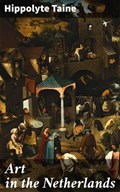In "Art in the Netherlands," Hippolyte Taine provides an intricate examination of the Dutch artistic tradition, focusing particularly on its evolution during the Golden Age. Taine employs a methodical approach, combining historical analysis with aesthetic critique to explore the interplay between social, political, and religious influences on art. His style marries scholarly rigor with vivid descriptions, illuminating the works of key figures such as Rembrandt and Vermeer through the lens of cultural context. This book is not merely an art historical survey but a deeper inquiry into how the ethos of Dutch society shaped its visual culture. Hippolyte Taine, a prominent French critic and historian, was profoundly influenced by the philosophical movements of his time, particularly the ideas of positivism and empiricism. His academic background and interdisciplinary studies in philosophy, history, and aesthetics led him to explore the relationship between art and its societal framework, positioning him uniquely to analyze the Dutch masters. Taine's passion for understanding how culture and environment inform artistic expression is palpable throughout his work. "Art in the Netherlands" is indispensable for students of art history and enthusiasts alike. Taine's compelling narrative and insightful commentary invite readers to not only appreciate the beauty of Dutch art but also to understand its significance within a broader historical context. This book is a critical resource for anyone seeking to deepen their understanding of art's connection to the socio-cultural dynamics of its time.

